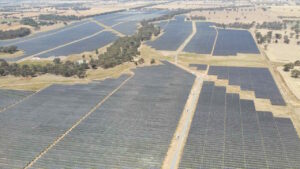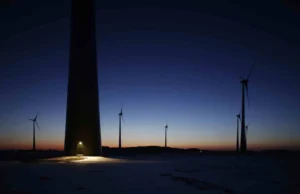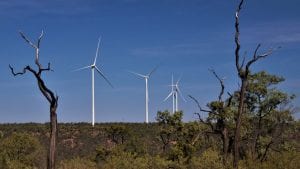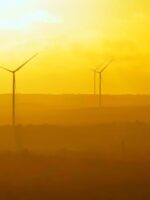South Australia’s wind generators this week posted record levels of production, enjoying – at least for a brief moment – one of the unheralded flow-on benefits of the breakdown in the Loy Yang A coal generator in Victoria.
South Australia has more than 1,800MW of wind capacity, but – because of new rules introduced after the state-wide blackout in 2016 – cannot produce anywhere near that amount at any one time unless there is a sufficient number of gas generators operating at the same time.
That doesn’t happen often, because when the wind blows strong the prices go down and the gas generators prefer to be asleep rather than burning expensive fuel for little reward.
But some gas generators have changed their sleeping habits since a unit at AGL’s Loy Yang A brown coal generator fell out of bed in May and won’t be back in service until December.
Its absence, energy analysts note, means that AGL is using one of its units at the Torrens gas generator in South Australia more often, and it’s this that allowed wind output to reach record levels on Monday.
 According to NEMLOG, the maximum instantaneous output of 1,707 MW of wind power in South Australia was dispatched in the 00:55 hrs interval on Monday, June 10, beating the previous record of 1,652 MW on Wednesday, July 4 last year.
According to NEMLOG, the maximum instantaneous output of 1,707 MW of wind power in South Australia was dispatched in the 00:55 hrs interval on Monday, June 10, beating the previous record of 1,652 MW on Wednesday, July 4 last year.
The record levels of output only last about one hour, because the Pelican Point gas generator decided it was its turn for a nap around 1.50am, and the state’s wind output was constrained once again.
Wind output is capped by the Australian Energy Market Operator at various levels depending on the mix of gas generators operating at the time. Mostly this allows maximum wind output of between 1200MW and 1400MW. The state’s growing amount of large scale solar (currently 250MW and about double and then triple) is not impacted.
The departure of Pelican Point on the Monday meant that the constraint was re-imposed and more than 300MW and on occasions more than 400MW of capacity had to be constrained as this graph below shows.
As an interesting aside, across the National Electricity Market on June 10, wind output through much of the day outstripped that of brown coal, and during those early hours on Monday when Torrens Island unit was operating, brown coal at both Loy Yang A and Yallourn brown coal generators were dialled down considerably.
Over the day of June 10, wind provided 57.3 per cent of total output, with large scale solar adding another 3.2 per cent. There was also another 6.0 per cent contribution from rooftop solar. A significant amount of the output was exported to Victoria.
The NEM-LOG analysts call this the butterfly effect. “The impact of the operation of one small Gas Unit in SA (Torrens Island A1 120 MW Gas Unit), had a major impact on NEM outcomes over the period of an hour – the Butterfly Effect,” they note.
The wind farms are looking forward to the proposed new interconnector to NSW, which will allow more exports, and less constraints, at times of high wind conditions.












